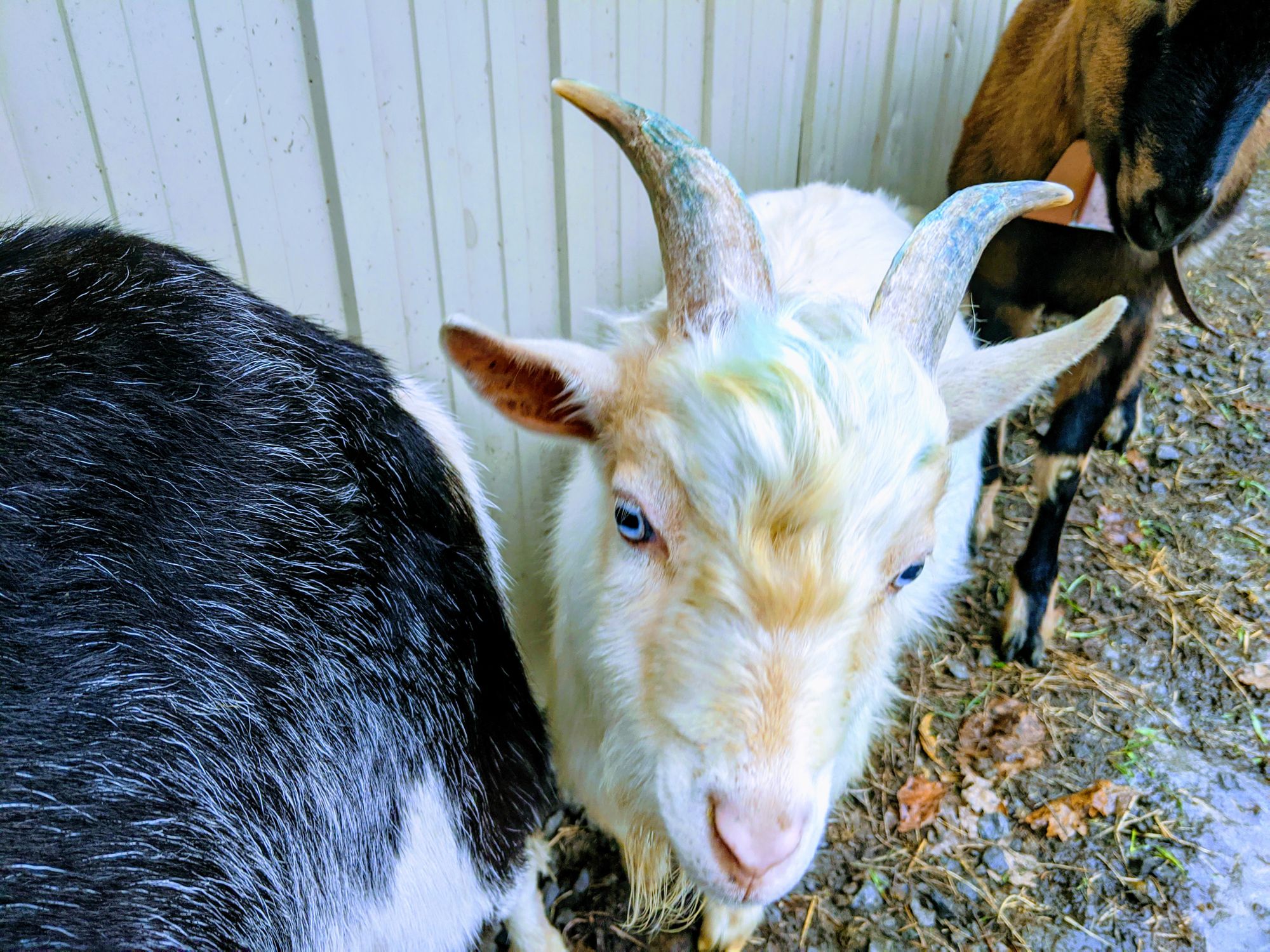Love for sale
I didn’t have an extensive knowledge of goats before we decided to get a dairy doe. I was initially resistant, since I had heard goats were a nightmare to contain.

I didn’t have an extensive knowledge of goats before we decided to get a dairy doe. I was initially resistant, since I had heard goats were a nightmare to contain. But I wanted access to modest amounts of raw milk, and a even a tiny Jersey cow produces *gallons* each day, Once I tasted fresh goat milk and found it wasn’t goaty at all, a goat seemed the way to go.
As is my habit, I spent the period leading up to their arrival furiously researching the topic. An early discovery: like any herd animal, they don’t do well on their own. And an unhappy goat is a loudly vocal escape artist in search of caprine company.

So that is how we ended up with Elaine *and* Lucy. These girls are LaManchas, a breed developed in California in the 1930s by Eula Fay Frey, a woman determined to cure her husband’s stomach ulcers with goat milk (he died in a car crash instead).
Aside from the weird abbreviated ears, they are known for being hardy, having a very good milk profile (good volume and butterfat content, sweet taste) and a relatively sane, people-oriented temperment. Not all goats make good pets, but these girls have been a good fit for us and very tolerant of Harriet’s puppy enthusiasm for *NEW FRIENDS!!!!*
Goats will forage and graze pasture, so we’ve worked on acclimating them to a tether. Staked out in a shrubby area, they do a great job clearing brush.
Elaine came to us in milk because she bore twins early this spring, but Lucy is a year younger and has not had a “freshening” yet. Getting milk from her requires a pregnancy to term, and since LaMancha really only come into heat (i.e., become fertile and receptive to sex) in the fall I needed to find a buck for her quickly. Preferably from good dairy breed and smaller in stature, so the smaller kids would make for an easy first kidding.
And that is how Peanut, the Nigerian Dwarf, came to stay with us for the month. He has blue eyes and a chill attitude, which is great because he is small enough to slip through our fences easily. Nigerians are the dairy breed with the highest butterfat content.
Of course, as fate would have it, Lucy, who gave all the signs of being in heat in the weeks before his arrival, is mostly indifferent to our little stud. They bicker over treats and attention like siblings. There’s a 3 week period between heat cycles, so we just have to wait.
Elaine, on the other hand, has been a great illustration of how the mere presence of a buck can bring a doe into heat. As the boss bitch, she gave the poor little guy a hard time as a newcomer to the herd. Goats work out their social relationships with *a lot of* head butting. But the other day I noticed that these two were suddenly going everywhere together. We had observed some lip curls (“flemen”) as these two dialed into each others pheremones, but then all of the sudden, this. . .

As I have come to recognize over the past nine months, there are so many small details and insights that only become present to you through firsthand observation. This was totally true of milking a goat (which I will delve into another post). But courtesy of our visiting bachelor, I now know more about goat sexuality than I thought was possible to know.
In the couple days that a doe is DTF, there is no point at which the goats decide, ok, enough with the sex. It is CONSTANT. Standing, walking, eating. It was an ordeal separating them when it was time to milk Elaine, since he didn’t seem to think that was a good enough reason to stop.
Suddenly I am really questioning the traditional etymology of “horny.” Have you ever wondered why sexually voracious satyrs are depicted as half-goat? Now you know.

While the size mismatch makes this pairing look inauspicious, here’s something else I learned: a goat penis is way farther up the body than you would expect. Think about where you imagine a navel. But instead there's an extendable pointer.
Even if he didn’t possess this anatomical advantage, this guy would find a way. His persistence is astonishing.
It will be a while before we will know for sure if my lifelong obsessions with veterinary medicine and midwifery will find their glorious culmination approximately five months from now. These goats are known for multiples, so we could end up with up as many as six mini-LaManchas next spring.
What I learned:
